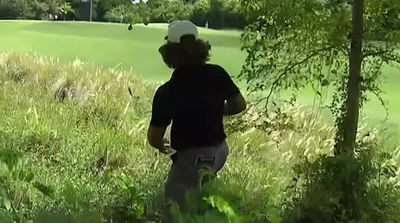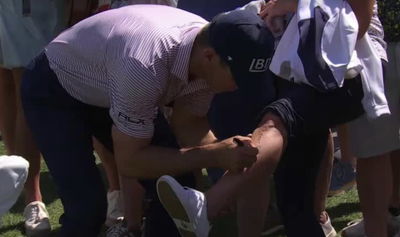How many dimples are there on a golf ball? Here's all you need to know...
All golf balls feature dimples to help them get airborne, but each premium ball contains a different number of dimples...

It's one of the most common golfing questions that get thrown around from time to time: how many dimples are found on a golf ball?
While there is no one-size-fits-all answer, you will typically see anywhere between 300 and 450 dimples on a new premium golf ball in 2021.
When it comes to our favoured TaylorMade TP5 golf ball here at GolfMagic, you will find 322 dimples. However, throw it over to another popular golf ball such as the Callaway Chrome Soft, and you get 332 dimples.
On the new Vice Pro Plus, you will see 336 dimples, while on Tiger Woods' Bridgestone Tour B XS ball there are 330 dimples. The Titleist Pro V1 ball consists of 352 dimples. You can therefore see that most of the biggest balls in golf today feature around the 320 to 350 dimple mark.
But you can go through just about every golf ball ever made over the past 10 years and find a differing number of dimples compared to the next branded golf ball - so in short, all golf balls feature different numbered dimples. Essentially, the higher number of indentations on a golf ball, the higher it flies.
RELATED: YOUR GUIDE TO ALL THINGS GOLF BALLS
"Different manufacturers will arrive at a unique dimple pattern for a specific line of golf ball," reads a report on GolfBalls.com.
"For example, when you see products advertised as either 'high trajectory' or 'low trajectory', it is an ode to the tweaking of the dimples. Many golf ball brands like Bridgestone and Srixon carry separate lines that address different preferences and skillsets.
"If you are counting, most regulation golf balls will fall into the 300 to 450 dimple range. If you are measuring, your typical dint is about 7/1000th of an inch deep. Engineers say every 1/1000th is worth about five yards on the course."
GOLF BALL CHART: HOW MANY DIMPLES ARE ON YOUR GOLF BALL?
What is certain is that every single golf ball ever made will have a dimple pattern. This is to give golf balls their aerodynamic force to create lift. The indentations also provide the backspin that launches a golf ball more easily into the air.
"Dimples on a golf ball create a thin turbulent boundary layer of air that clings to the ball's surface," reads a report on ScientificAmerican. "This allows the smoothly flowing air to follow the ball's surface a little farther around the back side of the ball, thereby decreasing the size of the wake."
Back in the day, the game of golf started with goose feather golf balls. They were then replaced with the rubbery dried sap of an East Asian sapodilla tree called Gutta Percha in the mid-1800s. By 1905, things then really started to accelerate for golf balls when English manufacturer William Taylor registered a patent for a golf ball dimple design. Fast forward today, and brands are now stamping their own marks on golf balls with differing numbers of dimples.
With the days of golf balls being made by hand long gone, every premium golf ball is now mass manufacturered at a ball plant with brand-spanking new covers and pre-made with dimple patterns to make it easier for a golfer to hit longer and straighter golf shots than before.
A report on GolfBalls.com states: "The tiny cup-like indentations worked the same way as cuts and nicks in the cover; scientists call them "turbulators". These strategic dents shook up the layer of the air directly around the surface of the ball and reduced drag."
"A smooth golf ball hit by a professional golfer would travel only about half as far as a golf ball with dimples does," reads a report on the topic in the Scientific American.
"The lift and drag forces on a golf ball are very sensitive to dimple depth: a depth change of 0.001 inch can produce a radical change to the ball's trajectory and the overall distance it can fly.
"Dimples have traditionally been spherical in shape, but it is possible to optimize the aerodynamic performance of other shapes."
Other common golf ball questions we often get is what is the weight and size of a golf ball? The answer to this is that a golf ball is required to have a mass of no more than 45.93 grams, and a diameter no less than 42.67mm.
When it comes to purchasing a golf ball, don't let dimple patterns effect your choice. Simply opt for a golf ball custom fitting if you are interested in testing out a specific golf ball, and base your decision solely on feel and performance. When you're standing over a golf ball, you won't have a clue how many dimples are on your golf ball.
PICKS OF THE WEEK: OUR FAVOURITE GOLF BALLS 2021
Sponsored Posts
Latest News












